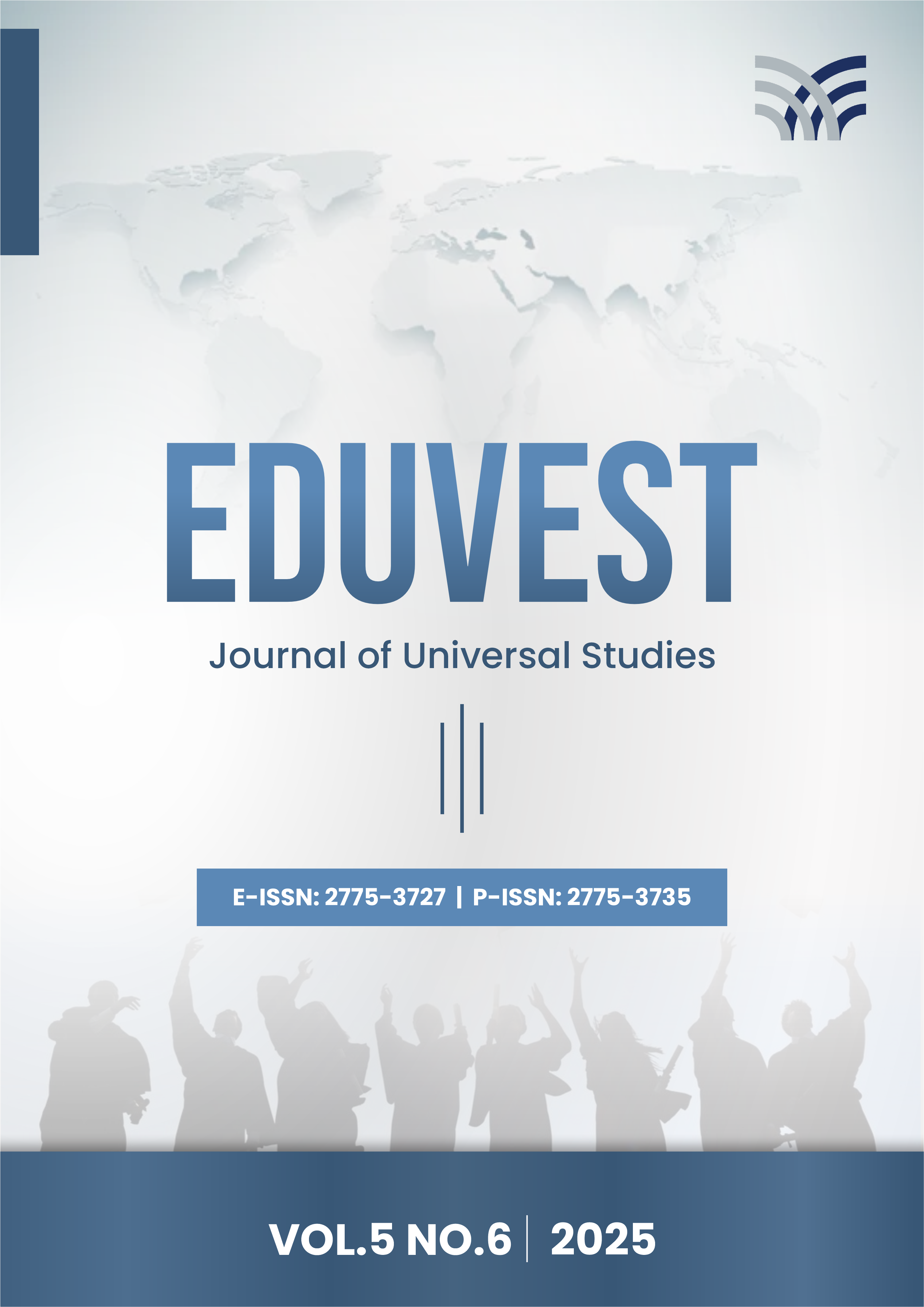Consumer Preferences and Sensory Profiles of Commercially Processed Meat Analog Products in Indonesia
DOI:
https://doi.org/10.59188/eduvest.v5i6.50233Keywords:
Consumer panelist, Consumer preferences, Meat analog, RATA, PLS-SEMAbstract
The increasing global demand for beef challenges the sustainability of traditional meat production, leading to the emergence of meat analogs as a promising alternative. However, consumer unfamiliarity and low sensory appeal remain key challenges to broader acceptance. This study aimed to identify key sensory attributes using the Rate-All-That-Apply (RATA) method, assess consumer preferences through hedonic testing, and explore the relationship between texture and preference using partial least squares structural equation modeling (PLS-SEM). Four commercial meat analog products available in Indonesia were evaluated through a Focus Group Discussion (FGD) with 8 consumer participants and sensory testing with 32 consumer panelists. Results showed that rendang was the most preferred product (hedonic score: 4.97), driven by attributes such as meaty flavor, rendang flavor, oily shine, and tender, fibrous, and juicy textures. Steak ranked second (4.37), with similar favorable characteristics. In contrast, beef slice balado (3.78) and jerky (3.44) were less preferred, mainly due to texture characteristics that did not align with consumer expectations. PLS-SEM analysis confirmed that texture is a major factor influencing consumer preference. These findings emphasize the importance of improving texture quality to support the acceptance of meat analog products.
Downloads
Published
How to Cite
Issue
Section
License
Copyright (c) 2025 Mutiara Siska Putri Utami, Dase Hunaefi, Dede Robiatul Adawiyah

This work is licensed under a Creative Commons Attribution-ShareAlike 4.0 International License.











